Double-decker buses have long been one of the main symbols of London. They are calleddoubledeckersand have been roaming the city streets since 1956. In total, the city system has 8,000 red buses, which travel on more than 600 different routes. They are convenient because they can accommodate twice as many passengers as regular public transport. Also, from the second floor, tourists have a better view of all the main attractions of London. In other countries, such public transport is rare, but during the Soviet era, double-decker buses still tried to become part of Moscow traffic. But, as you can understand, not everyone liked this innovation. Now you will find out why this was a bad idea.
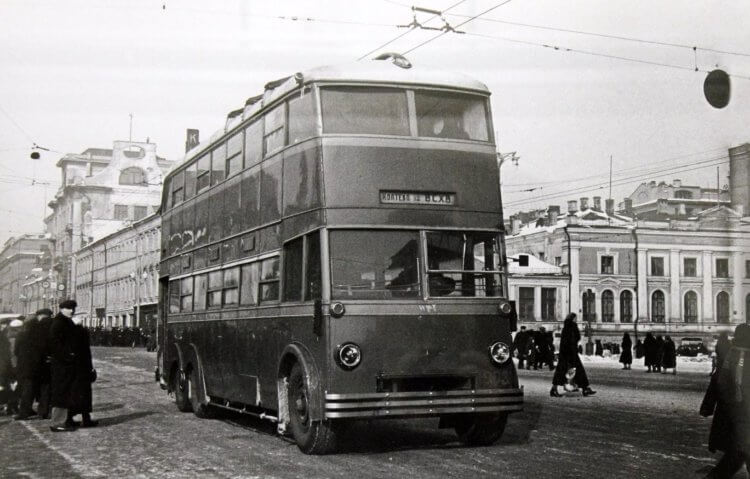
In the 1930s, double-decker trolleybuses YATB-3 were launched in Moscow, but they did not gain popularity. Image: m24.ru
Red buses in London
From 1956 to 2005, double-decker Routemaster buses roamed the streets of London. When it comes to English public transport, many people think of these buses. Over the long period of their existence, they have become the hallmark of London – their images can be found almost everywhere where this city is mentioned.
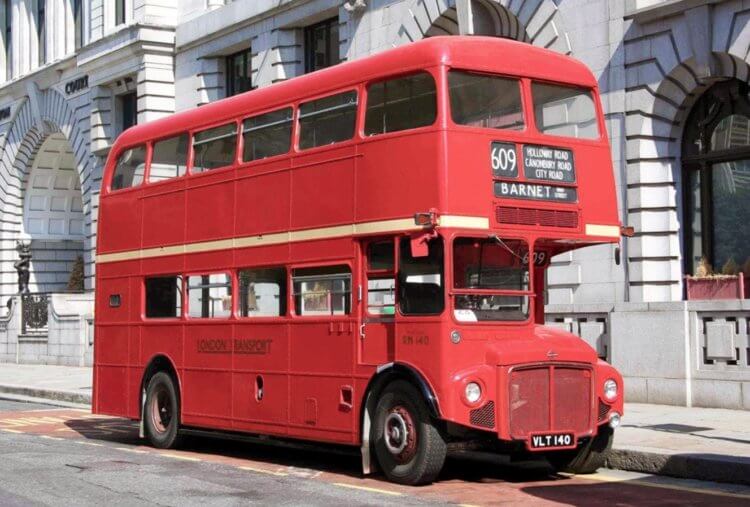
Classic bus “Rootmaster”. Image: auto.mail.ru
The length of the Routemaster buses was 9 meters, and the height reached 4.3 meters. They never had doors – people entered and exited through the open area at the back. If they wanted, they could easily get out in case of a traffic jam and go about their business on foot. London lovers of freedom clearly liked this opportunity.
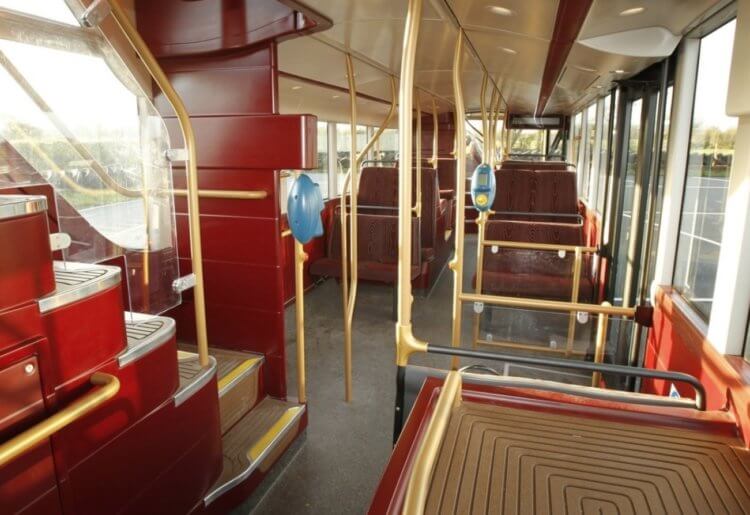
Rootmaster bus inside. Image: sportishka.com
Today, updated “New bus 4 London” buses are running around London. They have a more modern appearance and a hybrid design. The front wheels are driven by a diesel engine, and the rear wheels by an electric motor. During the day, the batteries are powered by solar panels, and at night by an electric generator.
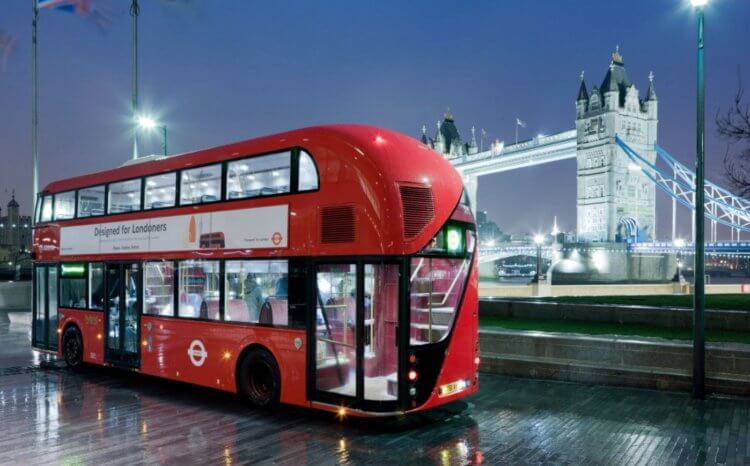
New model London bus. Image: businessinsider.com
Read also:What is a Girobus (not a bus) and why are they dangerous to life
Soviet double-decker trolleybus YATB-3
In addition to buses, there were double-decker trolleybuses in England. In the 1930s, the USSR became interested in this technology and signed a contract with the British manufacturer for the supply of one copy of the high trolleybus AES 664T.
The British miracle of technology arrived in the Soviet Union in 1937, and a year later the Yaroslavl Automobile Plant produced it copy – trolleybus YATB-3. A total of about ten copies were produced, but they were not as good as the original.
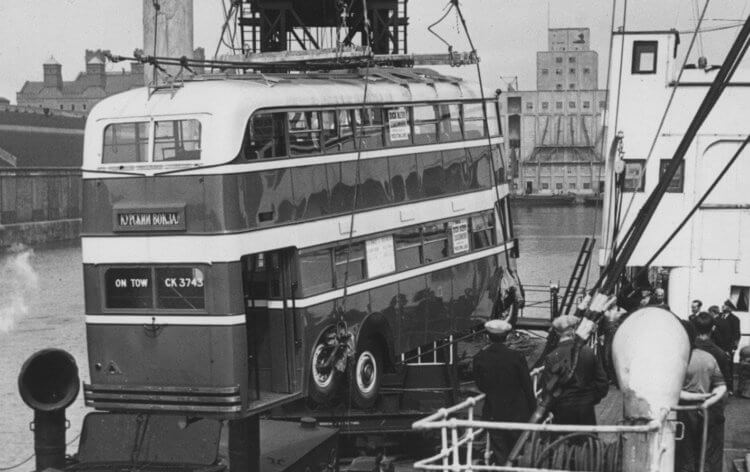
The British trolleybus AES 664T is preparing to be sent to Moscow. Image: bigpicture.ru
Firstly, the double-decker trolleybus YATB-3 turned out to be two tons heavier than the British AES 664T. Because of this, he drove at speeds of up to 55 kilometers per hour, which was very low even by the standards of those times. In addition, he had difficulty turning and braking. Due to the combination of these two factors, the new trolleybuses greatly interfered with Moscow traffic.
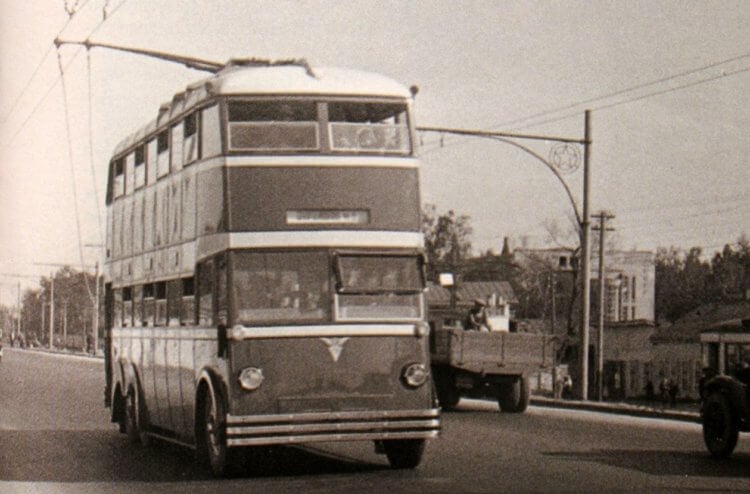
Soviet trolleybus YATB-3 in 1937. Image: Wikipedia, scan of the magazine «Rodina»
Secondly, double-decker trolleybuses turned out to be unprepared for Russian winters. At first, Moscow residents and guests greeted the new type of transport with great interest. But with the arrival of winter, it became scary to ride on tall buses, because on icy roads they swayed violently from side to side. Not a single case of a trolleybus falling on its side was recorded, but people were still afraid to ride them.
Thirdly, the double-decker transport was very uncomfortable inside. Its ceilings were low, so tall people could only ride while sitting. The stairs to the second floor were inconvenient, which is why people sitting at the top sometimes did not have time to go down to get off at the stop.
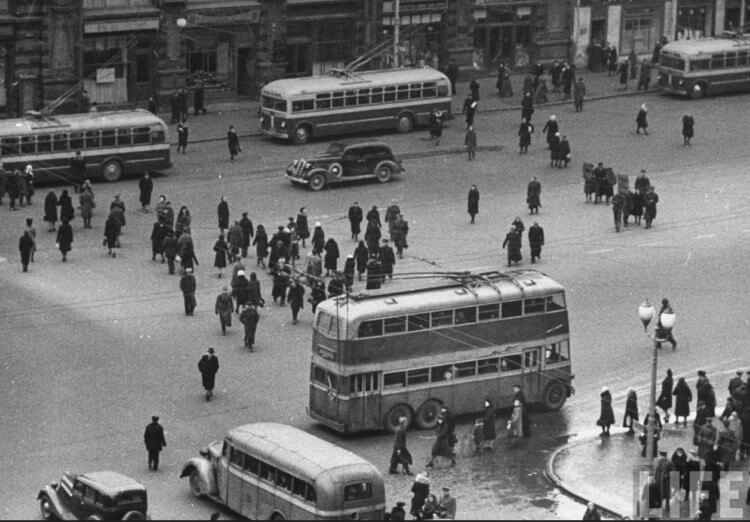
YATB-3 trolleybus on a Moscow street. Image: istorya.ru
Despite all these shortcomings, YATB-3 trolleybuses were used until 1953. Unfortunately, not a single copy of this extremely unusual type of transport has survived to this day.
Article on the topic: Which cars of the USSR were copied from their Western counterparts?
Double-deck buses in the USSR
In 1959, double-decker transport began to travel on Moscow roads again. This time it was German Bussing Do-56 buses, but they also could not become part of the traffic. Like the trolleybuses described above, they were very slow and clumsy, and in winter they again risked falling on their side. In 1964, German equipment broke down, the authorities did not want to spend the budget on spare parts, and the buses were sent for scrap.
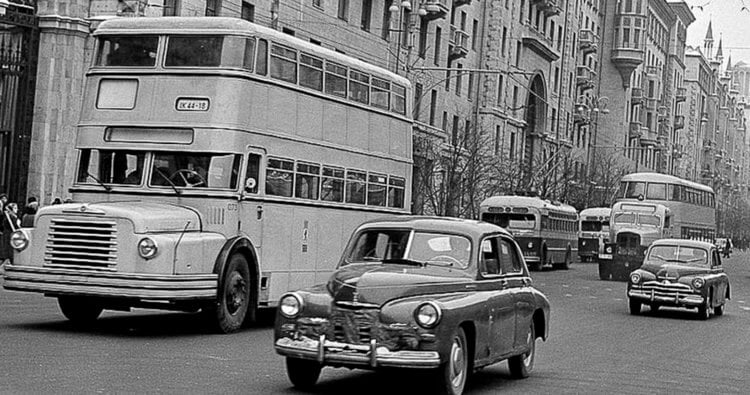
Soviet double-decker bus Bussing Do-56. Image: auto.mail.ru
You can discuss this and other articles on our website in the Telegram chat. They also host interesting surveys and quizzes!
During the times of the USSR, a lot of interesting things happened, and the current generation will certainly be interested in learning something new on this topic. We bring to your attention our articles “Things of the USSR that can be sold for big money” and “7 dangerous things that children of the USSR had fun with.” At one time they got a ton of views!